MOSSES OF UNUSUAL FORM
(Sphagnum, Polytrichum, Atrichum, Pogonatum, Fissidens, Bryoxiphium, Tetraphis, and Diphyscium)
I. Sphagnum. Sphagnum is a big and important genus of mosses that are especially prevalent in acid bogs. Vast areas of the Arctic are dominated by Sphagnum bogs. In Ohio, Sphagnum is not especially common. The plants have a peculiar aspect, consisting of upright stems with branches in clusters that are spirally arranged, and crowded at the stem tips. They look like squishy little palm trees.
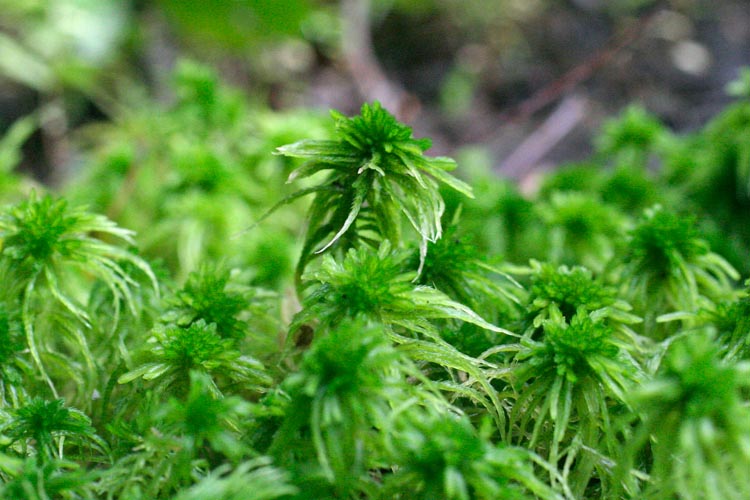
Sphagnum looks like squishy little palm trees.
Microscopically, Sphagnum is even more distinctive. The leaf cells of sphagnum mosses are arranged in a network of narrow, green cells enclosing marge, empty, clear ones. The empty cells have pores that allow water to enter; this is the cellular basis for sphagnum’s extraordinary water-holding capacity, and its popularity as a garden soil amendment.
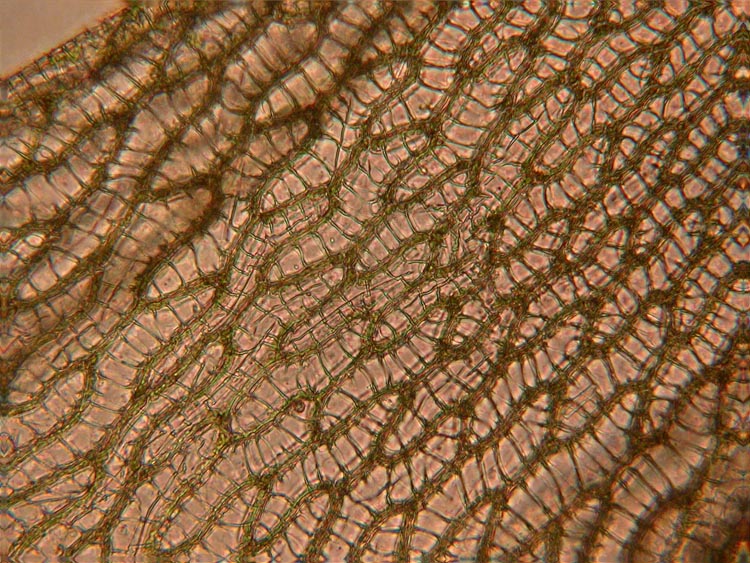
The cells of Sphagnum are arranged in a network of green and clear cells.
II. The family Polytrichaceae. A group of mosses that is distinctive morphologically is the family Polytrichaceae, which includes several widespread and robust species. For example, the Ohio haircap moss, Polytrichum ohioense, is common on the ground in woods throughout the much of the eastern U.S.
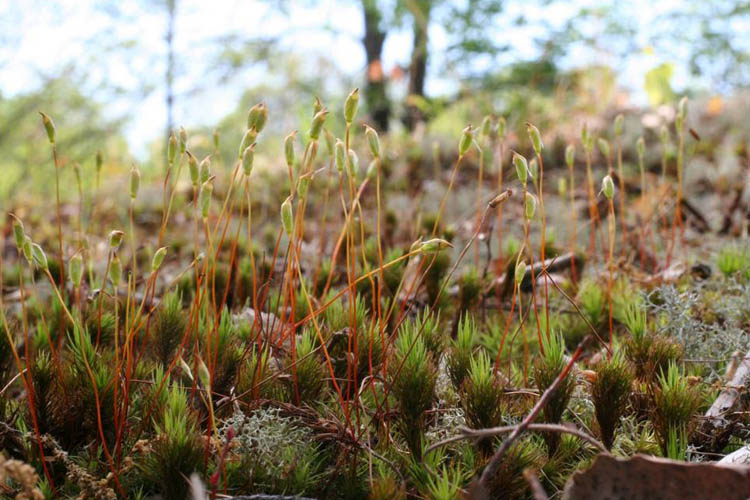 Ohio haircap moss, Polytrichum ohioense, is a robust acrocarp.
Ohio haircap moss, Polytrichum ohioense, is a robust acrocarp.
A distinctive feature of the genus Polytrichum is its calyptra, which is covered with many (poly) hairs (trichum).
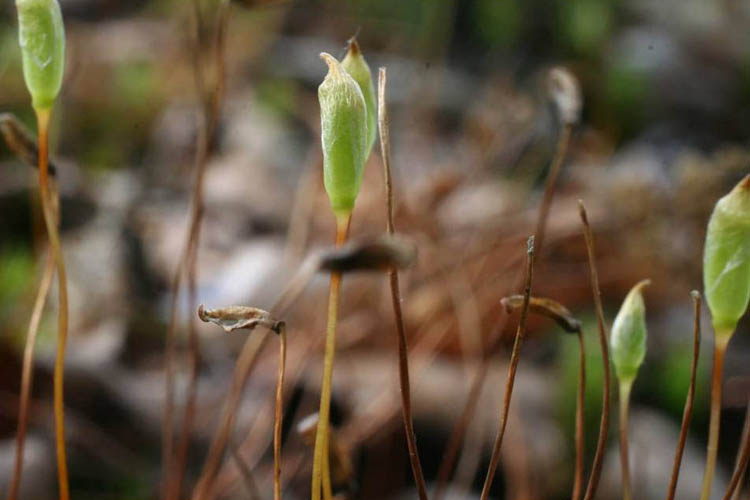
The Ohio haircap moss calyptra is covered with many hairs.
A distinctive feature of the family Polytrichaceae is the peristome, consisting not of individual teeth, bot of a ring of pores.
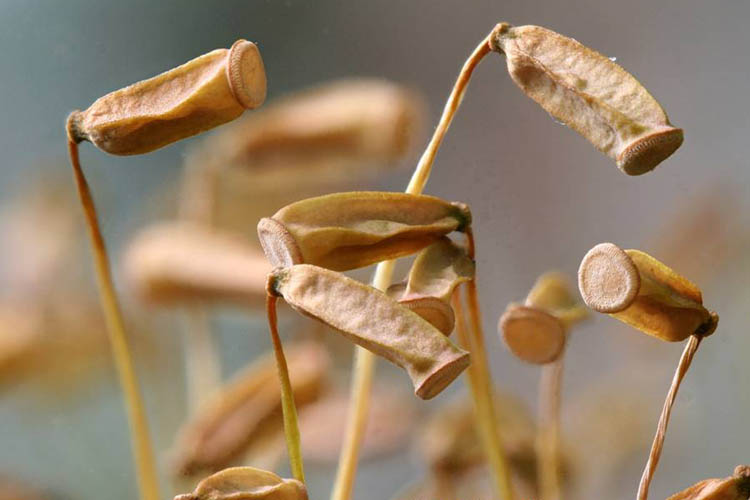
Mosses in the family Polytrichaceae have a distinctive peristome.
The teeth are fused to a central disk, so the spores exit through pores arranged in a ring.
Most moss leaves are one cell thick. But Polytrichum leaves are several cell layers thick, and much of the upper surface is covered by ribbon-like sheets of stacked cells running lengthwise, called “lamellae.”
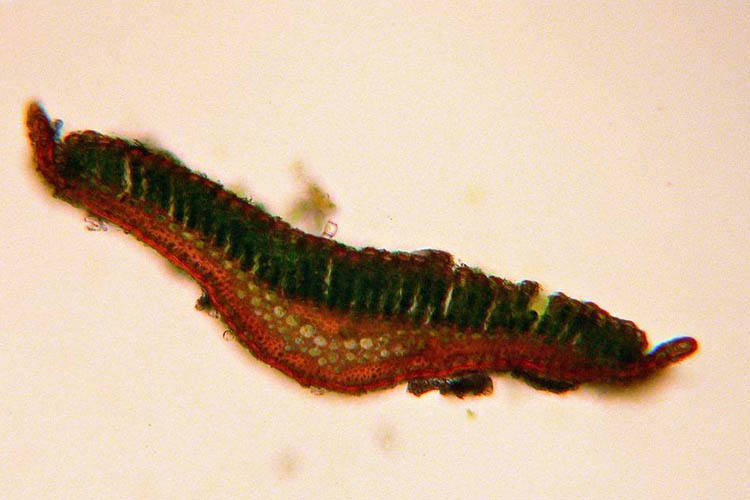
Cross-section of Polytrichum leaf showing columnar sheets of cells (lamellae)
Another prominent genus in the Polytrichaceae lacks hairs on its calyptra and so is named Atrichum (“no hairs”).
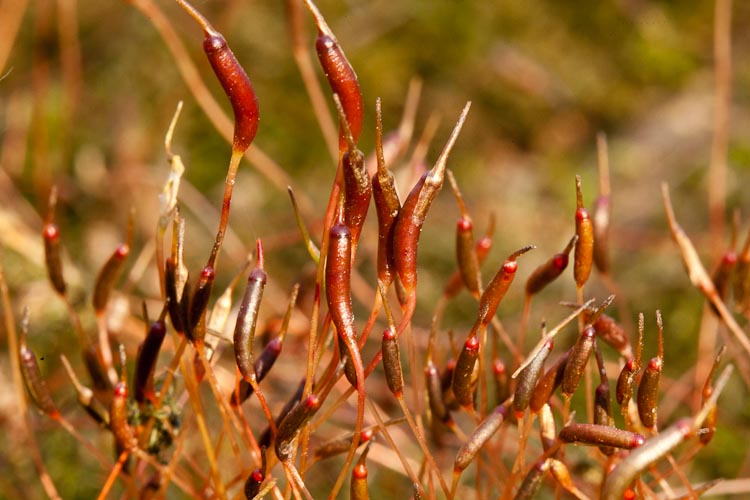
Atrichum sporophytes have smooth (hairless) calyptras.
Atrichum is a genus of robust woodland ground mosses that display well the lamellae that are characteristic of the family Polytrichaceae.
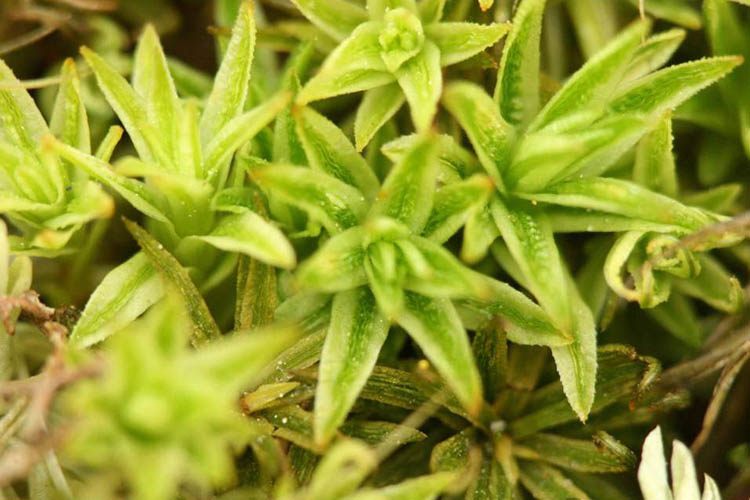 Atrichum gametophytes: note the lamellose costa
Atrichum gametophytes: note the lamellose costa
Microscope views of the Atrichum leaf show the lamellae well.
MOUSEOVER the IMAGE for CROSS-SECTION of LEAF
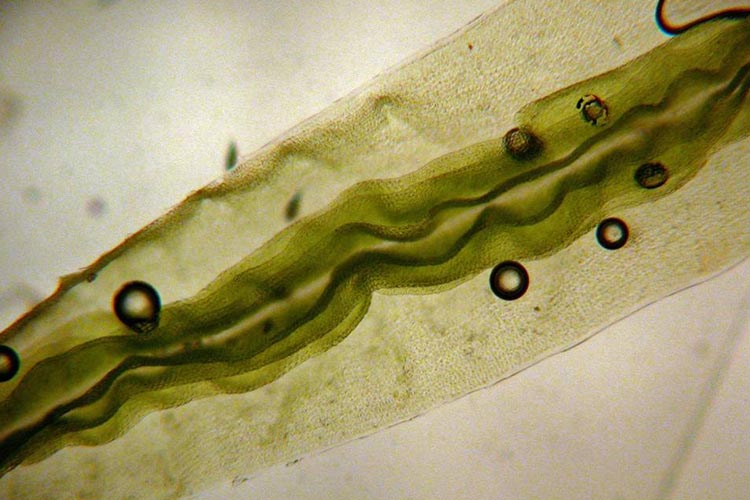
The Atrichum leaf displays prominent lamellae.
Pogonatum pensylvanicum is a remarkable moss, fairly common on moist bare acid soil along streams. Sporophytically, with its hairy calyptra and cylindric capsules, it looks like a fairly typical member of its family, the Polytrichaceae. However, the but the gametophyte is quite small. The species grows as widely separated individuals from a lawn-like mat of protonema that is persistent and long-lived, unlike the transitory protonema that characterizes most mosses.
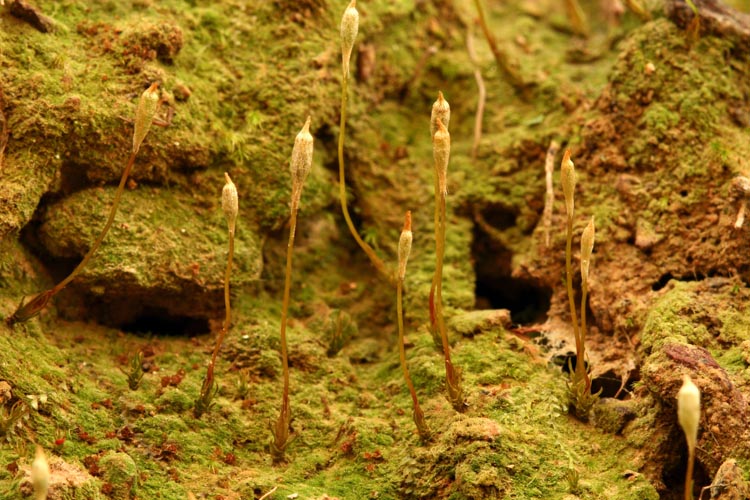
Pogonatum pensylvanicum has a persistent protonema.
IV. Pincushion moss is whitish because the leaves are several cells thick. Nearly all mosses have leaves that are one cell thick. Pincushion moss, genus Leucobryum, leaves are composed of several layers of clear cells covering both sides of a central layer of green ones; the overall aspect is that the plants look ghostly white. The plant grow in dense tufts looking like pinccushions.
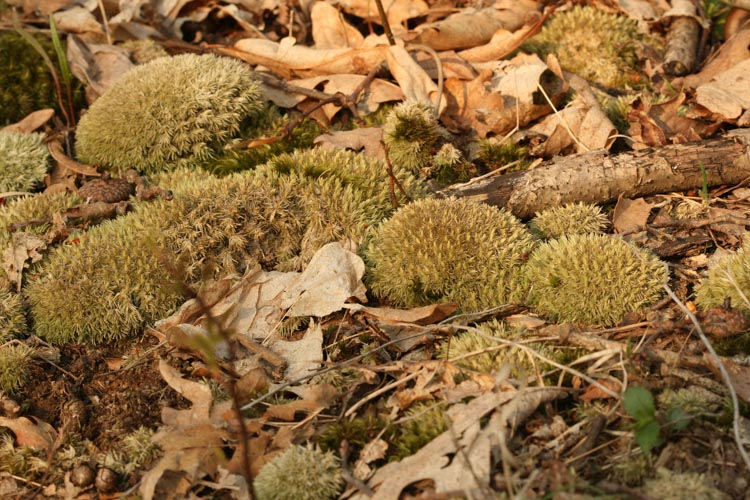
Leucobryum glaucum is “pincushion moss.”
IV. FFFFissidns is fffflat. Most mosses have leaves arranged in tight spirals abound the stem. A few, however, are two-ranked, with straight rows of leaves directly across one another on the stem. Note: many creeping mosses that have leaves that are not in 2 rows nonetheless look like they do because they have their leaves folded in a manner that gives the stems and branches a flattened appearance. Do not confuse those so-called “complanate” plants with the genus shown here that is actually two-ranked.) Fissidens is a moderately large genus with a few extremely common members, and is one of the most distinctive mosses.
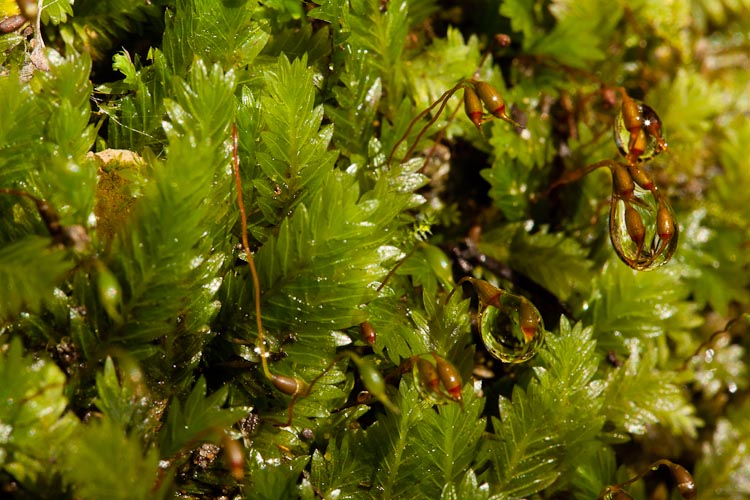
Fissidens leaves are inserted in two rows directly across from one another.
Fissidens is flat, and the leaves have a peculiar anatomy. Like those of irises, the leaves are “equitant,” a term pertaining to their similarity in cross-section to a horse and rider. The upper base of each leaf is split (the rider’s legs), and the base of the leaf above (the horse) fits deeply into the split.
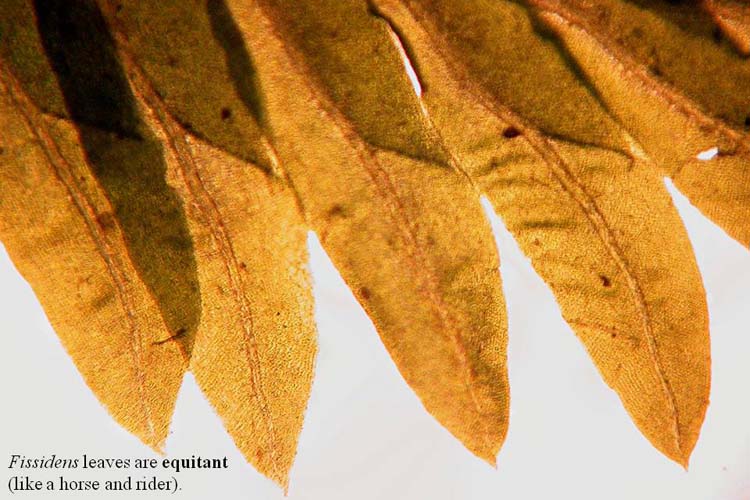
Fissidens leaves are split along the upper surface, and clasp the base of the leaf above.
Another moss with a strictly 2-ranked leaf arrangement is sword moss, Bryoxiphium norvegicum. Sword moss is quite a rarity globally, so we’re lucky to have it in many of the cool dark “rockhouses” or “grottos” –recesses in sandstone cliffs –in the Hocking Hills.
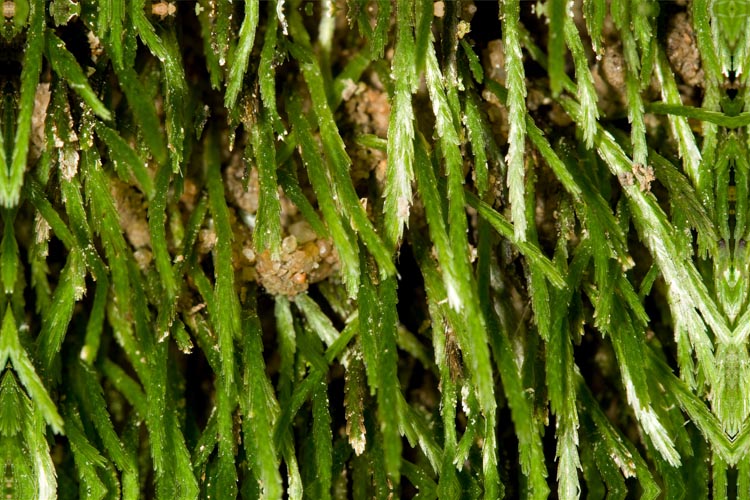
Looking like little two-edged swords, Bryoxiphium is two-ranked.
V. Tetraphis has a 4-toothed peristome, and very distinctive gemmae. Some mosses are distinctive because they reproduce wholly or in part asexually by means of specialized “gemmae” that fall away from the plant and form new plants (clones).
Tetraphis pellucida is an acrocarp found on stumps and sandstone ledges that forms little bird’s nest-like cups at the stem tips containing tiny globular gemmae. The sporophytes are peculiar too; they have only 4 teeth. 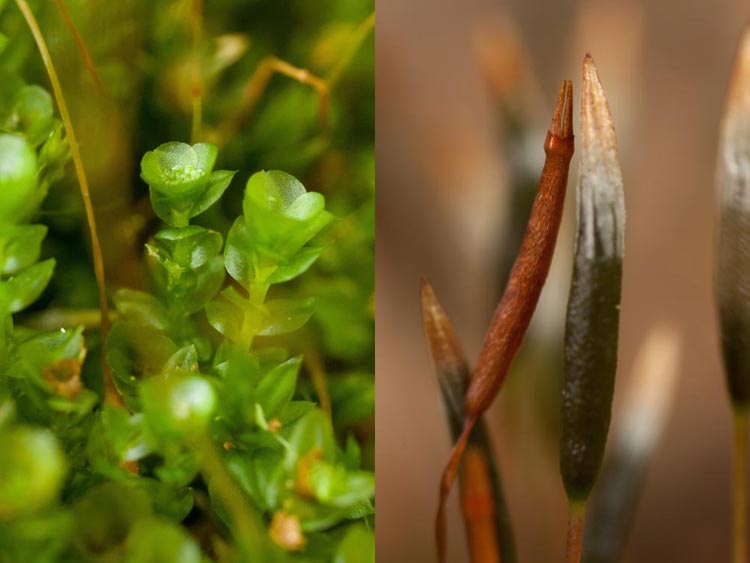
Tetraphis produces abundant gemma cups, and has a peristome of 4 teeth.
Some mosses have miniature branch-like gemmae at their stem tips and/or in the axils of their leaves.

Gemmae in the form of miniature stems
Syntrichia papillosa is a very distinctive moss that reproduces only by means of asexual gemmae. These are small globular clusters of several cells each, produced abundantly along the costa (midvein).
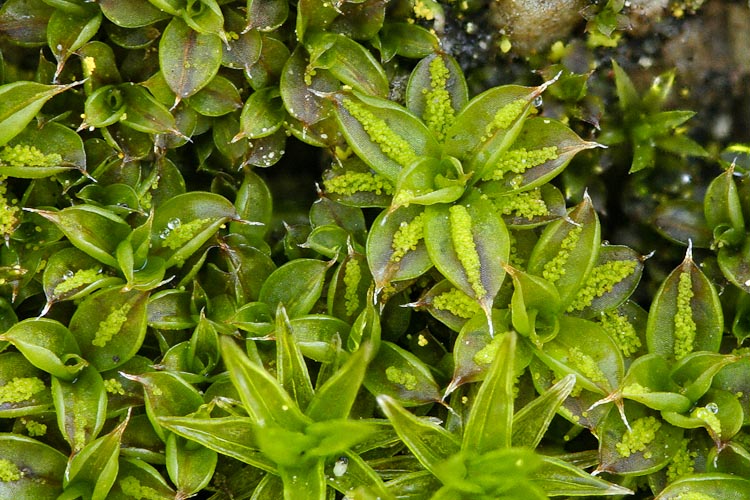
Syntrichia papillosa is a short acrocarp with broad leaves bearing gemmae along the costa.
VI. “Grain of wheat moss,” Diphyscium foliosum, has tiny tongue-shaped leaves that grow in little rosettes, topped by a sessile (seta-less) ovoid capsule. It’s been said the resemble “scared rabbits int the grass.”
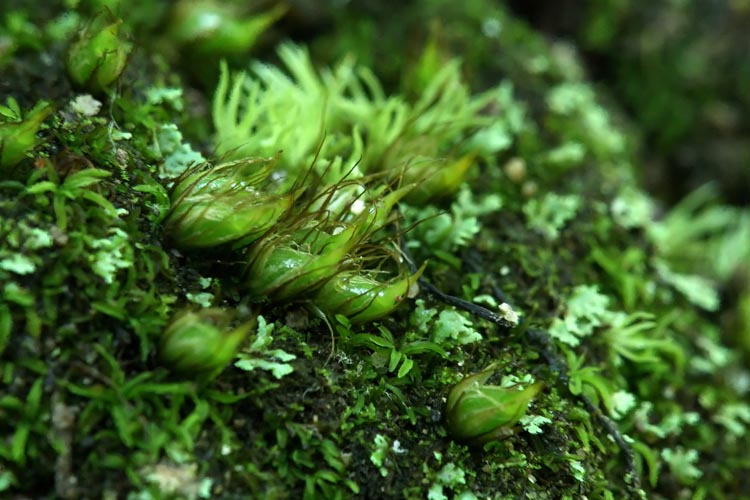
Scared rabbits in the grass!
